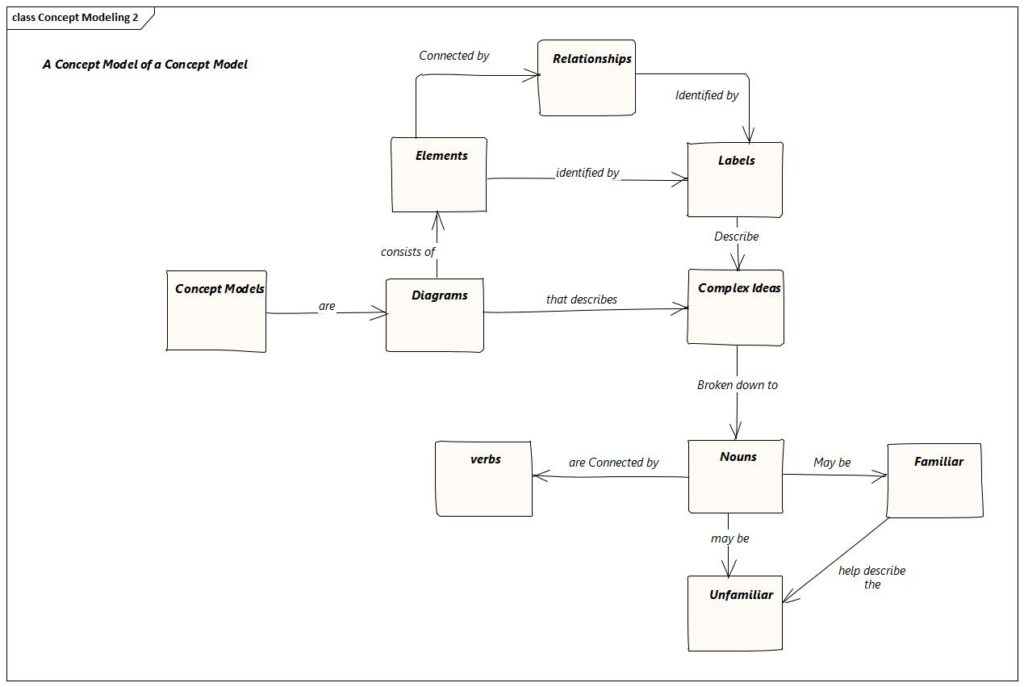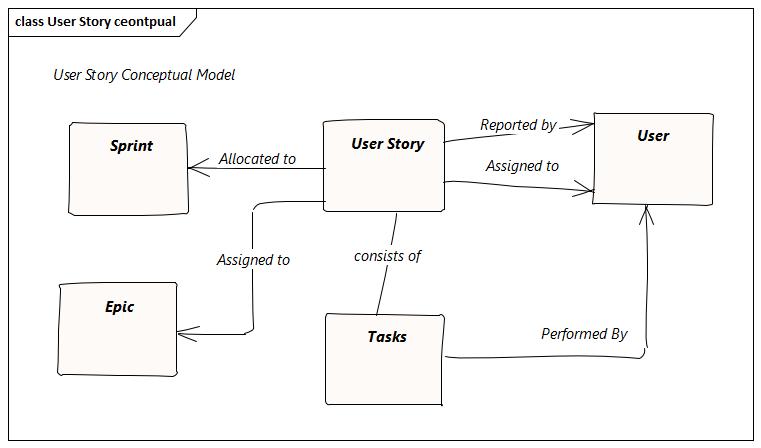Concept Modelling 101
In this article we’ll be looking at Concept Modelling and how this awesome technique can help your project stakeholders to unearth / discover and share the concepts of a project.
The problem with Starting with a Data model
I’m totally a data geek and whenever I start a new project, I always jump at the opportunity to create a data model (always starting with the conceptual) to unearth the business rules and the concepts within the scope of the new project. But there are a couple of problems with directly starting out with a data model on a project. You’ll notice that your Business stakeholders get lost and confused so easily once you start drawing entities with relationships and cardinality symbols, but the Developers love it (they are used to the more technical engineering language of data models). Our business stakeholders often just sigh and wonder why you’re wasting their time, with silly diagrams that they’ll never use.
If you don’t use the terminology that the business people use themselves you have lost your audience. So always consider the nature and understanding of your readers / audience.
So before you jump into concept modelling make sure that you start creating a Glossary of terms.
Once you’ve created a glossary and Conceptual Model you can start work on a conceptual Data model…but only then.
Know your audience
As an Analyst you’ll need to extract concepts from your stakeholders so you’ll need to become a master communicator. Don’t attempt to draw anything that resembles an engineering blueprint to your non engineering minded stakeholders. Do even attempt to show a UML diagram to an executive… they’ll just mentally categorize your presentation as “to technical” and ignore every word you say from that point on wards.Just keep an eye out for the yawning, it is bound the occur. You’ve lost your audience. This is why you shouldn’t just start creating Data models.
Concept mapping technique was created by Psychologists (Specializing in learning and teaching) which is used in education with great results. It provides a visual structure that is very easy to communicate. As a species humans visualize. We are around 80% visual in dealing with our surroundings.
Our Visual perception is based on heuristics, which makes sense, if you are in the jungle and something that might be a tiger might be looking your way. People prefer the visuals over reading the text… In the age of social media it’s getting harder and harder for an individual to maintain attention to read a whole article. I’m thinking no one will actually read this article. Dammit!
Concept Model Examples
ERD’s / UML Diagrams fail as business side tools but concept modelling is much more accepted by the business community as it builds on what is natural to us as humans and not as engineers. So here are some practical examples of Conceptual Models.

The diagram speaks for itself. You can read sentences in the diagram.
Concept Models are Diagrams that describes complex ideas and is broken down into Nouns. Nouns may be familiar or unfamiliar. Nouns are connected by verbs….. Lets look at another example

A User Story is reported by a user. But also assigned to a User. A user story consists of tasks which are performed by users. User Stories are assigned to Epics. A User story is allocated to a Sprint.

A netflix customer has an Account. This account contains a Payment method. An Account consists of Profiles. With a profile you can watch/rate and be recommended movies. A Profile has a list. And a My List can either add or remove movies.
Elements of a Conceptual Model
The following are the elements of a conceptual model
- Noun Concepts
- These are represented as the classes / elements in the diagram and are the nouns of the domain
- Verb Concepts
- These are represented by the relationship lines between Noun Concepts
- The relationships lines are not exclusively verbs but can also be representative of
- Categories
- Classifications or
- Roles
When to use Conceptual Modelling ?
- There is a lot of confusion around the concepts in a project / business
- Need to understand and organise domain concepts
- Stakeholders are sceptical about to technical techniques like data modelling
- Need to uncover complex business rules in a domain
Pros
- Facilitates learning
- Facilitates creativity
- Takes advantage of human reliance on visualization
- Easily understood by any human (non-technical and technical)
- Makes knowledge explicit
- Business friendly way to communicate
- Independent of data design biases
Cons
- Requires skill to create (lots of abstract thinking and experience required)
- Knowledge and rule focus might be foreign to stakeholders
Now that we’ve got some concept models and glossaries under the belt lets move on to the next article – Conceptual Data Modelling!